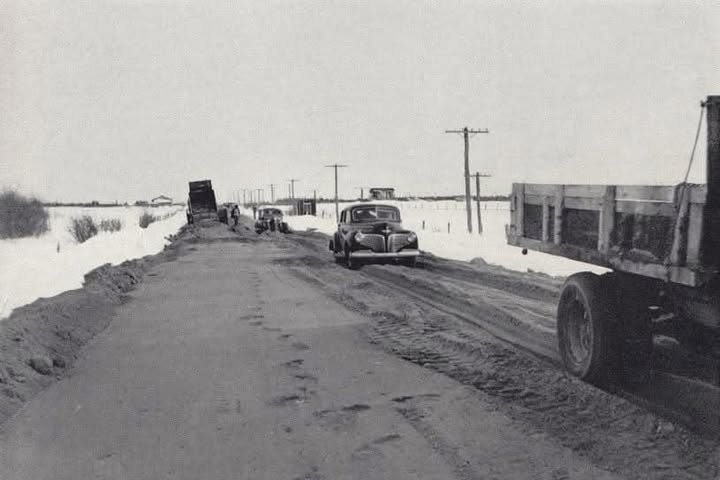1931–1955: Challenges, War Efforts, and Mechanization
Surviving the Depression (1931–1938)
Like much of the world, Spruce Falls struggled through the Great Depression. From 1932 to 1935, operations were reduced to just two to three days a week. However, by 1937, the company had begun to invest in new equipment, preparing itself for better times ahead.
World War II and Workforce Changes (1939–1949)
As World War II unfolded, Spruce Falls found itself adapting once again. The former POW camps were reactivated, and Japanese Canadians displaced from British Columbia were brought in to fill labor shortages at the Woodlands camps. During this period of upheaval, Spruce Falls pushed forward with improvements. The Sulphite Mill’s circulating and packer system was installed, and a second sulphite dryer was added soon after to boost capacity. In 1942, the Evening Star Newspaper Company acquired a minority interest in Spruce Falls, strengthening the company’s financial footing. A few years later, reforestation efforts advanced with the establishment of the Moonbeam Forest Nursery, and aerial photography was completed to better map and manage the forest limits. By the end of the decade, Spruce Falls had emerged as a leader in forestry innovation, setting new standards for sustainable operations.
Early Mechanization and Fire Management (1950–1955)
The 1950s were a transformative decade for Spruce Falls, filled with advancements and milestones. In 1950, power saws replaced the traditional buck saws, boosting productivity and easing the physical toll on workers. By 1953, the Moonbeam Nursery’s first transplants took root, and a comprehensive forest inventory was completed, paving the way for the future.
Kapuskasing, too, was growing. In 1951, Prince Philip and Princess Elizabeth visited the mill, witnessing Spruce Falls’ significance to the town. By then, the population had reached 5,000, with Spruce Falls employing 1,500 people and producing 750 tons of newsprint daily—half for The Times, the rest for other customers. The company’s cutting rights had expanded to 6,360 square miles, signaling even more growth ahead.
However, nature still posed challenges. In 1955, the region experienced an unusually high forest fire hazard that lasted through most of the summer, reminding everyone that even in an era of mechanization, the natural world remained unpredictable. The 1950s laid the groundwork for a new era, where innovation and progress shaped the future of forestry.





















